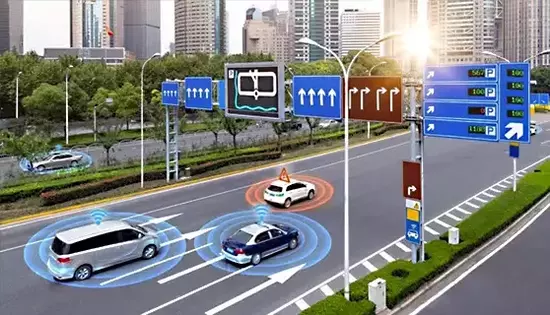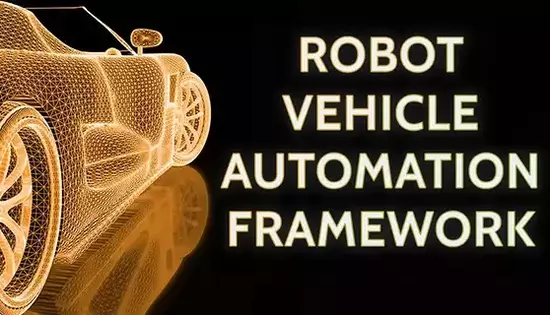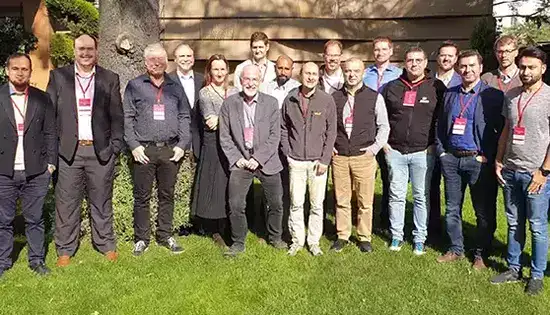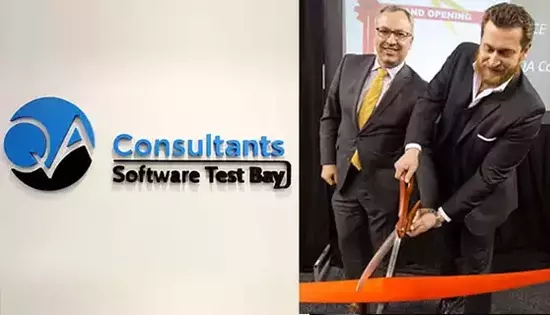Importance of Innovation in the Automotive Industry in Canada
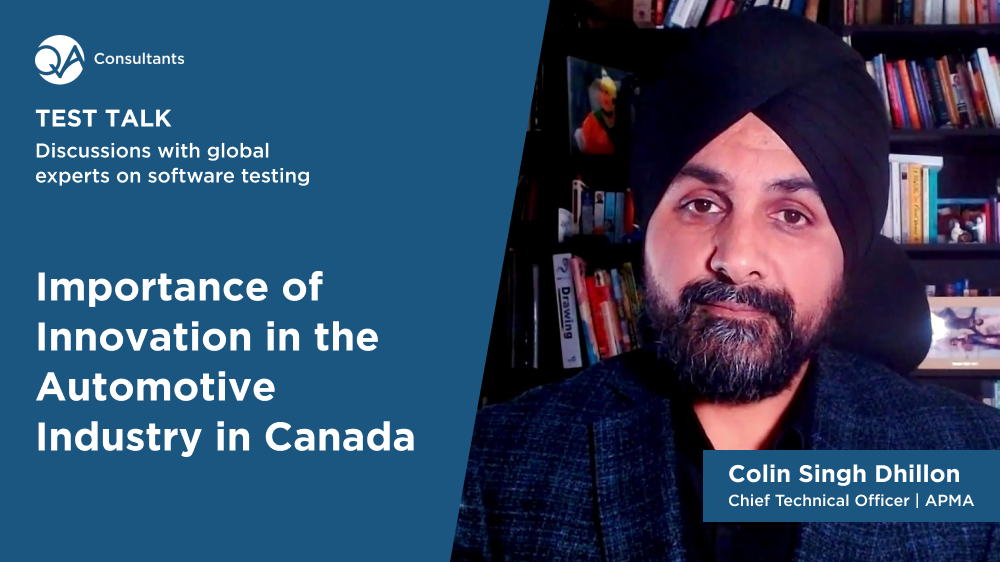
While at university, one of your first projects was to do an automotive design and you decided to redesign the exhaust system of a Honda Civic. Was that part of what made you desire to get involved in automotive design, or have you always had an interest in this area?
To be honest, I never really thought that I was ever going to go towards the auto industry. If so, I would have gone to Coventry University back in the UK and specialize in vehicle design. I was more of an industrial designer, looking at problems to solve. That Honda Project, which you mentioned, was just a day or two-day project. My thought was just that you needed to take the bumper and just peel it down to cover the muffler and so, that’s what I suggested and about a decade later it becomes a standard. But for me, the journey was always about problem solving.
I’d like to focus on two areas of innovation that you’re involved in. One is cybersecurity and the other is Project Arrow. Can you talk about the cybersecurity initiatives at the APMA and the journey that has resulted in the production of such major pieces of work, like Cyberkit 1.0 and Cyberkit 2.0 and other activities supporting the members of the APMA?
There’s a man that’s synonymous now in southern Ontario in the auto sector, and he goes by the name of Mr. A.J. Khan. A.J. arrived at the APMA offices back in 2018, after a one-hour meeting. I think we both understood the need and the requirements. Between November of 2018 and January 2019, we launched the APMA Cyber Security Committee and we’re very proud to say that within eight months we created the first offering which was Cyberkit 1.0. This document will help a company, whether you’re green around cybersecurity or whether you’re well versed in cybersecurity, to understand how to build the complete model and the governance for cybersecurity in the automotive sector– and it’s specifically in its supply chain. A car today is typically 20,000 to 23,000 components that come together and get assembled. The reality is that a lot of these now have embedded electronics and embedded software and intelligence. Rather than having to put all that pressure on the OEM to be able to flush out or identify any threat vectors, we feel it’s adamant for the auto sector to be cyber-versed and make sure that they understand the importance of cybersecurity, privacy and cyber safety.
How is in your view Canada handling cybersecurity in the automotive industry relative to how it’s being handled in the U.S. and other countries around the world?
When we talk of Canada, we’d have to talk of it through the lens of the supply chain because we don’t have our own OEM (Original Equipment Manufacturer). I would say we are as functional as any other geographic sector, whether it’s south of the border or whether it’s across the pond to Europe and other parts of the world. The automotive sector has only just released the ISO 20 1434 standard, which dropped in late 2021. It’s now going to take probably the next 18 months for companies to meet those standards and regulations and then to move forward. There is a lot of work to be done, but I don’t think we’re any worse off than any other jurisdiction.
In Europe and other countries outside of Canada. Independent testing, verification and validation requires a third party for cybersecurity standards. The OEMs are not allowed to certify themselves, whereas in Canada, Transport Canada doesn’t require independent testing. Rather, they set up a set of guidelines that need to be achieved. Do you see Canada requiring at some point harmonizing its regulations with Europe, Japan and South Korea?
I think the movement from the regulatory bodies, like the ones you’ve mentioned come from the fact that Europe, South Korea and the U.S. are home to their own OEMs, so their policies are influenced by the fact that you have these large original equipment manufacturing companies. Here in Canada, we are an assembler of vehicles. I think as Canada moves towards introducing its own OEMs, especially in this new technological advancement and the vehicle no longer being a mechanical device, it’s more of a technology platform. I think there will be some homologation and a kind of a connection with the way things are done in Europe, and Asia, and the US.
Can you say a few words about the global syndicate of mobility cybersecurity that you’ve established? Why did you start this organization and what’s its mission?
As we started to look into global issues around cybersecurity, we were quite shocked to learn that there is no such organization that is talking about mobility holistically throughout all sectors. The concern, obviously, is a lot of the software and hardware now in the advancements of mobility is being used on multiple forms of mobility in multiple sectors. After doing research and finding there was no such governing body, we decided that Canada has a global leading opportunity to play here. We are not trying to write new regulations or policies. We’re here to help. Yes, we want to increase cyber innovation, and yes, we want to increase public-private partnerships. We want to increase the importance of the cyber workforce and the talent being generated. We really think it’s going to become that holistic group to help solve or move the needle forward when it comes to cybersecurity and mobility.
It’s important for Canada’s decision makers, public and private, to create the right environment, provide the tools needed for Canadian talent to move from a supporting role to a leading role globally. How does that requirement for Canadian talent to take a leading global role relate to your Project Arrow initiative?
Obviously, I’m very passionate about this project. The president of the APMA, Flavio Volpe, and myself were contemplating the value of having projects related to the advancements of mobility here in Canada. What materialized was a project called Project Arrow which is a tip of the hat to the Avro Arrow of the 1950s, an aerospace project, which was put on hold and then cancelled after five prototypes were made. We decided to expand it to help showcase the best of Canada’s capabilities in the traditional sectors around the automotive industry as well as in the technology sectors. It’s a four-phase, two-year project and we’re currently in a critical phase, which is the engineering and build phase. This year in December, we will complete the build of this fully working prototype concept vehicle, and we will do an unveiling here in Canada before the end of the year.
How do the OEMs operating in Canada view Project Arrow, is it seen as a threat or are they actively engaged?
When we first started project Arrow, we said to ourselves that we wouldn’t include the global OEMs but, I have to give a shoutout to Toyota Canada and the team out there in Cambridge and Woodstock, Ontario. They are on the phone and they’re asking how can we help? And at our conference in December, our friends from Honda Canada also approached us and said, hey, how do we get involved and how can we support? This is an initiative to show Canada’s capabilities in the supply chain and to tell the world that if nations like Vietnam can launch Vinfast, and Turkey can launch Togg, Canada isn’t far behind.

Colin Singh Dhillon is an internationally recognized innovator and world leader in innovation in the automotive industry. He’s the Chief Technical Officer for the Automotive Parts Manufacturing Association. His ongoing work in the fields of connected autonomous security and electrification of mobility provides Colin with a global platform as a thought leader in the digitization of the automotive sector. Colin provides leadership to the Canadian automotive industry through national initiatives like Project Arrow, Canada’s first zero emission concept vehicle.

Peter Watkins is the Chief Operating Officer at QA Consultants and is the current President of the World Network of Productivity Organizations. Peter previously worked as Executive Vice President and Chief Technology Officer for the McGraw-Hill companies, Executive Vice President and Chief Information Officer for the Canadian Imperial Bank of Canada, Global Leader for Financial Services for EDS, and National Practice Director for Information Technology for E&Y.





